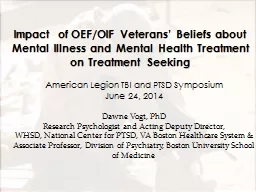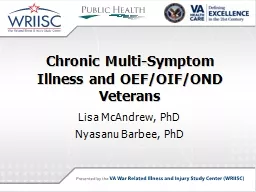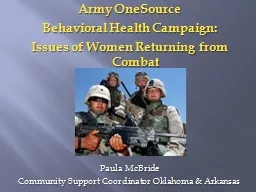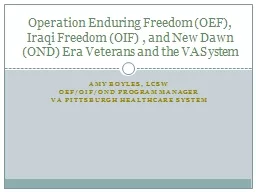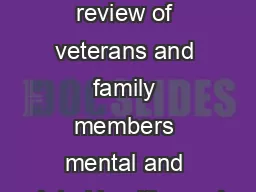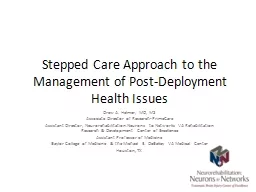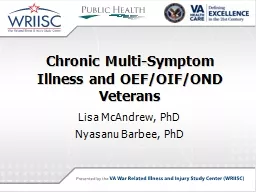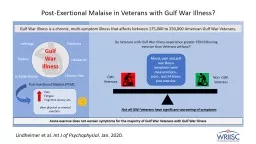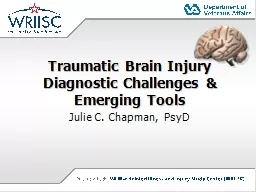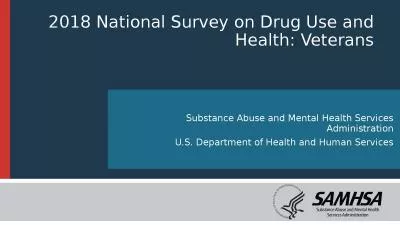PPT-Impact of OEF/OIF Veterans’ Beliefs about Mental Illness and Mental Health Treatment
Author : min-jolicoeur | Published Date : 2018-11-10
Dawne Vogt PhD Research Psychologist and Acting Deputy Director WHSD National Center for PTSD VA Boston Healthcare System amp Associate Professor Division of Psychiatry
Presentation Embed Code
Download Presentation
Download Presentation The PPT/PDF document "Impact of OEF/OIF Veterans’ Beliefs ab..." is the property of its rightful owner. Permission is granted to download and print the materials on this website for personal, non-commercial use only, and to display it on your personal computer provided you do not modify the materials and that you retain all copyright notices contained in the materials. By downloading content from our website, you accept the terms of this agreement.
Impact of OEF/OIF Veterans’ Beliefs about Mental Illness and Mental Health Treatment: Transcript
Download Rules Of Document
"Impact of OEF/OIF Veterans’ Beliefs about Mental Illness and Mental Health Treatment"The content belongs to its owner. You may download and print it for personal use, without modification, and keep all copyright notices. By downloading, you agree to these terms.
Related Documents

